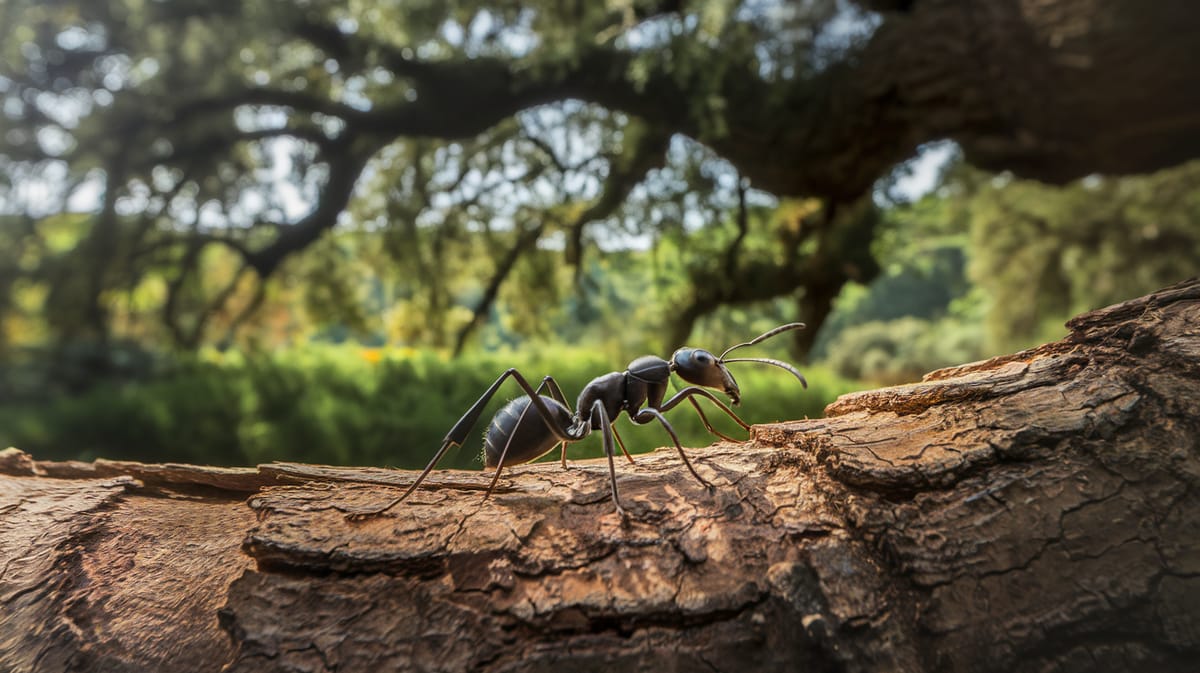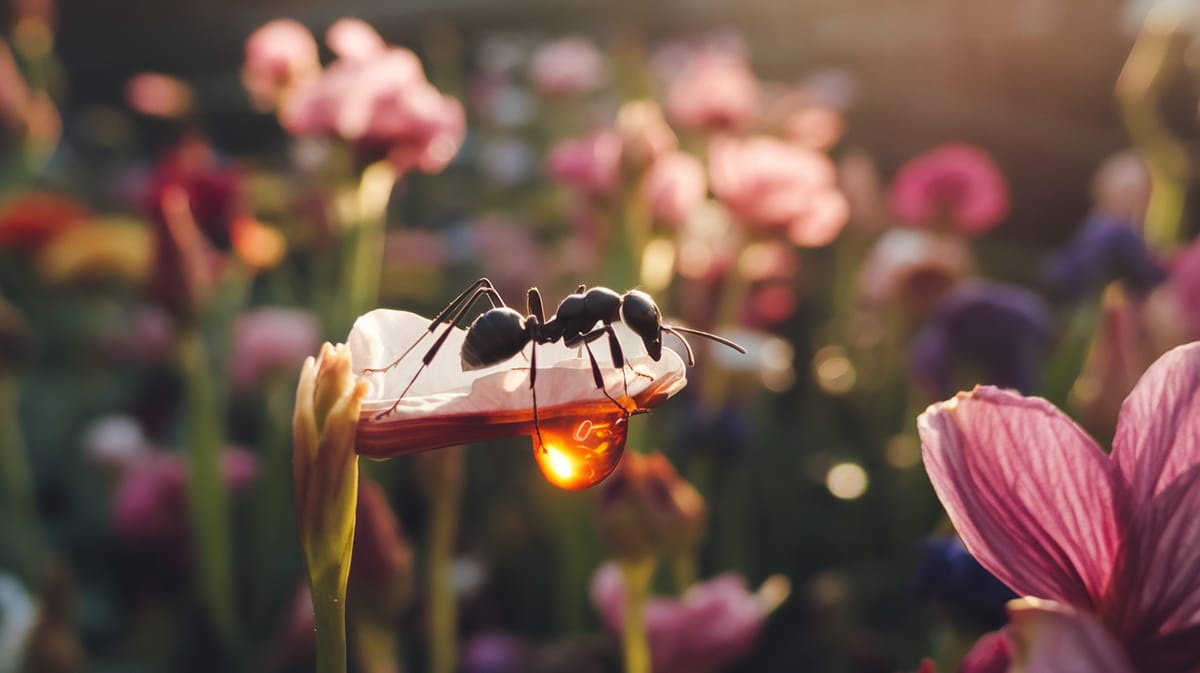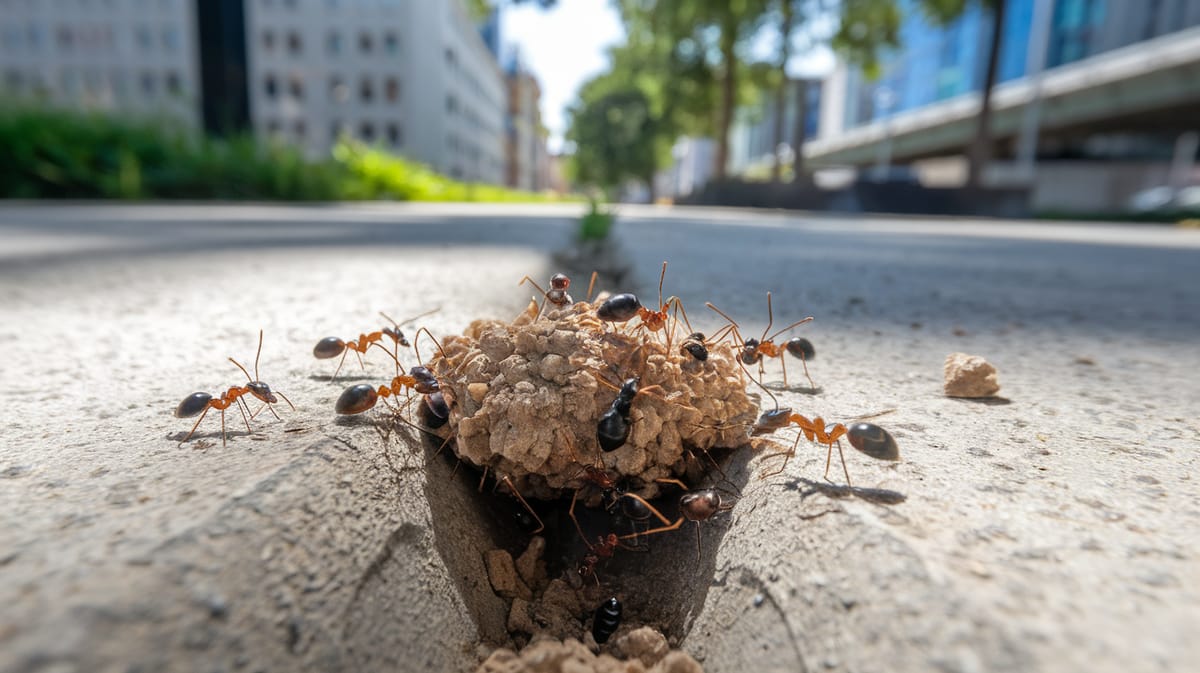Little Black Ant
Known for their glossy appearance, Little Black Ants are social insects thriving in large colonies, playing a crucial role in aerating soil and distributing seeds. Their cooperative behavior and foraging skills make them efficient scavengers.

Key Insights at a Glance
Did You Know?
Taxonomy & Classification
Little Black Ants are skilled foragers and social insects, adept at thriving in urban and natural environments due to their complex colony structures. Let's understand the evolutionary journey and classification of these remarkable decomposers.
Global Presence
Little Black Ants, part of the Monomorium genus, are found on every continent except Antarctica, reflecting their vast adaptability.
Evolutionary Resilience
Surviving since the Eocene epoch, these ants have adapted to diverse climates, showcasing their remarkable evolutionary resilience.
Lifecycle and Growth
A remarkable journey of transformation from Egg to Adult.
Egg
Eggs are small and oval, cared for by worker ants to ensure proper development and hatching into larvae.
Larva
Larvae are fed by workers, growing rapidly as they prepare to transition into the next stage through molting.
Pupa
Pupae resemble adults but remain motionless as internal changes occur, transforming them into fully developed ants.
Adult
Adults emerge fully formed, taking on roles like foraging, defending, or nurturing to sustain the colony.
Dietary Habits
A versatile forager that scavenges for food, it primarily consumes sweets, meats, and other insects to sustain its colony.
| DIET TYPE | DESCRIPTION |
|---|---|
| Primary Diet | Primarily feeds on honeydew from aphids, sweets, and greasy foods, exploiting various food sources in its environment. |
| Secondary Diet | Consumes plant secretions, fruits, and dead insects, supplementing its diet with available organic matter. |
| Occasional | Occasionally feeds on small vertebrates' carcasses, exploiting rare food resources when other options are scarce. |

Behaviour and Adaptations
Discover the fascinating abilities that make the Little Black Ant a resilient survivor.
Nest Building Mastery
Expert at constructing complex underground nests that offer protection and stability.
Cooperative Foraging
Relies on teamwork to efficiently gather food resources, ensuring colony survival.
Chemical Communication
Uses pheromones to coordinate activities and maintain social structure.
Ecosystem Impact
Understanding how Little Black Ants contribute to environmental balance.
Soil Aeration
Enhances soil health by tunneling, improving air and water circulation.
Seed Dispersal
Assists in the distribution and germination of various plant seeds.
Predation
Controls pest populations by preying on small insects.
Conservation Challenges
Understanding and addressing the major threats to Little Black Ant populations.
Chemical Exposure
Pesticides disrupt ant colonies, reducing population numbers and affecting ecosystem roles.
Habitat Loss
Urbanization and agriculture eliminate ant habitats, threatening their survival.
Climate Change
Temperature shifts affect ant behavior and food availability.
Frequently Asked Questions
How long do Little Black Ant live?
Little Black Ants have a lifespan of several months to a year. Worker ants typically live for a few months, while queens can survive for several years, ensuring the colony's sustainability.
What do Little Black Ant eat?
Little Black Ants primarily feed on sweets, greasy foods, and other insects. They are scavengers and opportunistic feeders, often foraging in kitchens and gardens in search of food.
Are Little Black Ant poisonous?
Little Black Ants are not poisonous. They do not pose a significant health risk to humans or pets, though they can be a nuisance when they invade homes in search of food and shelter.
Are Little Black Ant endangered?
Little Black Ants are not endangered. They are common and widespread across many regions, thriving in various environments, including urban, suburban, and rural areas. Their adaptability and reproductive capacity contribute to their stable population.
What do Little Black Ant symbolize?
Little Black Ants often symbolize teamwork, diligence, and perseverance. In various cultures, they are seen as models of cooperation and hard work, reflecting their highly organized social structures and collaborative foraging behaviors.
Do Little Black Ant bite?
Little Black Ants can bite, but their bites are generally harmless to humans. They may cause minor irritation or discomfort, but they do not have a potent sting or venom like some other ant species.
What color are Little Black Ant?
Little Black Ants are dark brown to black in color. Their shiny, uniform coloration helps them blend into their surroundings, making them less noticeable when foraging or nesting.
Does a Little Black Ant have wings?
Little Black Ants have winged males and queens during their reproductive phase. These winged ants participate in nuptial flights for mating, after which queens shed their wings to establish new colonies.
What does a Little Black Ant look like?
Little Black Ants are small, about 1.5 to 2 mm in length, with a shiny black body. They have two distinct nodes on their petiole, and their antennae are twelve-segmented with a three-segmented club.
Is a Little Black Ant an insect?
Yes, a Little Black Ant is an insect. Like all insects, they have a segmented body divided into the head, thorax, and abdomen, six legs, and a pair of antennae. They belong to the family Formicidae.
Related Insects
Discover insects with similar characteristics to Little Black Ant - including shared habitats, diets, and taxonomic classifications
Share this profile
Help others discover Little Black Ant
